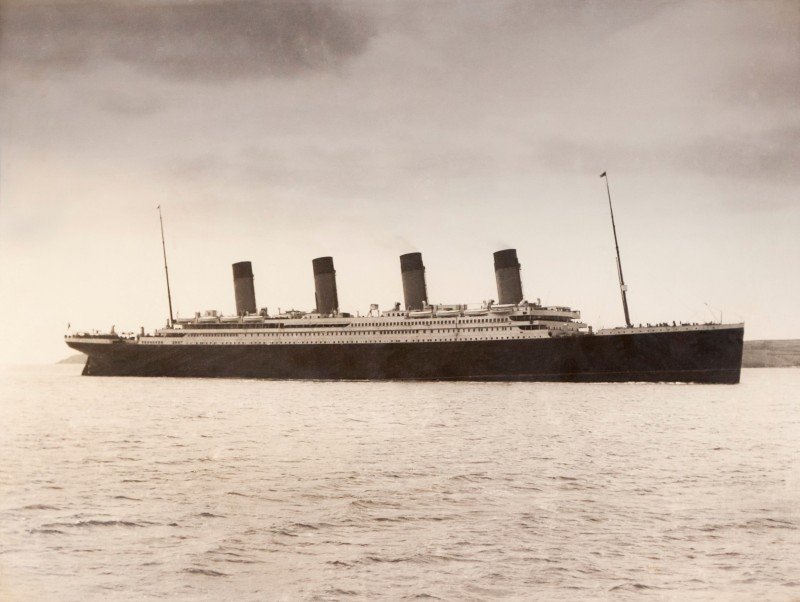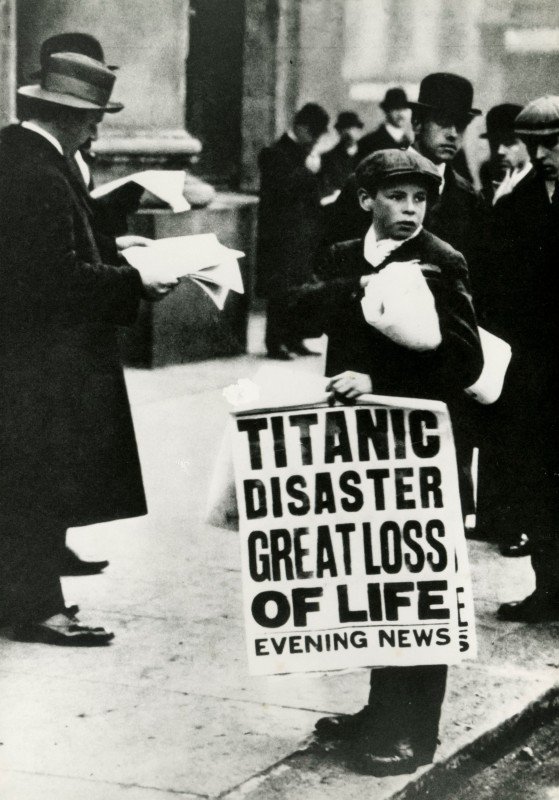The Titanic sank over 100 years ago, yet its lessons are still relevant today. Richard Byrne explores what the disaster can tell us about safety leadership.
 As the ship left the dock nobody could have envisaged what would happen. Fitted with some of the most advanced safety equipment, like watertight compartments and remotely activated watertight doors, it was built to incredibly high standards.
As the ship left the dock nobody could have envisaged what would happen. Fitted with some of the most advanced safety equipment, like watertight compartments and remotely activated watertight doors, it was built to incredibly high standards.
The ship’s captain, Edward Smith, was viewed as one of the most experienced in the world. During his 32-year career he had worked his way through various commands and spent time in the Royal Navy Reserves – where he was decorated with the Transport Medal and achieved the rank of Lieutenant. All in all, he was viewed as a ‘safe’ captain. You could also say he was well thought of by his employers; after all, he was often called upon to command the company’s newest ships on their maiden voyages.
In the mess rooms, provided by the ship’s operating company, they had posters saying that safety was the most important thing to them. Yet the crew on board this particular vessel were not permanent employees of the ship’s operating firm, in fact the majority of them only boarded for the first time in the hours before it set sail from Southampton.
Despite all the plaudits, the captain’s rise to fame wasn’t without some setbacks. The year before he had been in charge of a ship that was involved in an incident with a Royal Navy warship off the Isle of Wight which resulted in the death of a crew member and caused a great deal of damage to both vessels.
On the night the ship sank, it has been said that he ignored numerous warnings from other ships in the area that there was a large ice build up in the sea ahead of them and that he should proceed with caution. Of course, if you believe the speculation, heeding these warnings would have been made easier if the ship’s crow’s nest had been equipped with binoculars to help the lookouts see what was ahead of them. And the presence of the firm’s managing director on board the ship and his quest to get to its destination ahead of time, may have contributed to the captain’s decision to take the ship’s speed to well above the limit recommended for travelling through an ice field.
 We all know the story, immortalised by Hollywood, of RMS Titanic: four days into its maiden voyage she hit an iceberg in the Atlantic, ripping open the hull. The ship sank, killing over 1,500 people. It remains one of the world’s worst disasters in modern times.
We all know the story, immortalised by Hollywood, of RMS Titanic: four days into its maiden voyage she hit an iceberg in the Atlantic, ripping open the hull. The ship sank, killing over 1,500 people. It remains one of the world’s worst disasters in modern times.
In many ways, the irony of the Titanic is that we are still trying to get a grip of similar safety issues now, 103 years after the disaster, whether it be improving contractual arrangements with temporary workers and their agencies, induction arrangements, designing in safety equipment or having adequate emergency procedures in place. Many of the ‘big’ safety accidents that have happened over the last 40 years or so have had, at their heart, similar issues.
Any one of those topics is worthy of an article in its own right, but for me one of the biggest lessons from the Titanic is what we can learn about safety leadership. It is well known and accepted that commitment from senior managers and directors is absolutely critical to improve safety and there are a growing number of tools that organisations use to demonstrate just that. But the story of the Titanic helps illustrate two strategic issues, often overlooked by organisations that can help develop a transformation in safety culture and performance through improved leadership.
Promoting based on safety
Many organisations promote people from within and this brings certain advantages, like retention of the skill and knowledge base in the organisation. It also fills the vacancy quicker and supports a core HR ideal of developing people.
From experience, many organisations either get it wrong or have got it wrong in the past, promoting the best ‘doer’ rather than the person who was the best leader or manager – or at least someone with the potential to be so. Not only that, many organisations tend not to take into account the person’s safety record in their selection criteria or if they do it is as a side thought or at least not overt enough.
Arguably, if you work for an organisation that has just had a ‘mini Titanic’ (for example a serious accident or enforcement notice), then suggesting and introducing this is easier. But most organisations are not in that position so the burning platform to change is not there, and trying to create one might not work either, so a good way to start is to win the war one battle at a time.
To help illustrate this, let’s use a case study. At a site safety meeting the safety advisor, working for a large multi-site business, heard a tale that when the site had its last fire drill, one of the workers decided they were not going to evacuate the building because they were eating their lunch. At the time, they were also at the final interview stage to become the site manager.
The safety advisor spent the rest of the morning finding out if there was any truth in the rumour, which there was. They then went to have a chat with the recruiting manager and HR. During the course of the initial part of the conversation it became clear that the person concerned was probably going to get the job, so rather than rub the two senior managers up the wrong way by saying ‘you can’t give him the job’ (after all, it was not the safety advisor’s place to make recruitment decisions) they agreed a compromise.
This was that if the person was offered the job, it would only be on an interim basis to start with, because of their behaviour during the fire drill – and the individual would be given that feedback when the job offer was made. One of the factors that would decide if they had the job on a permanent basis was whether they completed some formal safety training and improved safety at the site.
The effect this had was two fold:
- the safety officer and the senior managers did not get embroiled in an argument that the safety officer would more than likely lose; and
- while the person broke a safety rule (and everyone knew they had) by not promoting him straight away the organisation backed up one of its core messages, that safety was important and would be considered in future promotions.
To be fair to the individual concerned, he did change his behaviour and felt really guilty that he put his manager under pressure by not evacuating the building. He quickly understood the sense of responsibility that a manager feels when they have people to look after. It was this that helped him to explain to his staff why safety was important to him – because he realised how irresponsible his behaviour had been, and if things had been different he might not have been there.
Performance objectives
Many organisations set people objectives and reward them for achieving them, there is no problem with that. However, when it comes to safety-related objectives, if you choose the wrong ones, people can achieve them by doing things in the wrong way.
The classic example is to set a bonus-worthy objective to reduce the number of RIDDOR accidents by X per cent. You can achieve this by improved safety management (which is what the organisation’s intention generally is), but you can also achieve it by under reporting or by getting people back to work before they are ready.
A better bonus-worthy safety objective that more enlightened organisations are starting to use is to get business leaders to develop and implement a plan to improve safety performance and culture for their specific part of the business. This simple approach drives the business leader to:
- understand the state of health and safety in the part of the business they are responsible for; and
- take accountability for their function’s safety performance and culture as well as the activities they are going to implement to improve them.
This objective can be the same year after year, which means it is easier for those writing the objectives, and more importantly it makes the business leader’s engagement with safety less superficial, as their focus will not change to some other safety ‘hot topic’ next year.
Invariably, organisations will want to measure the success of the plan in order to determine if the business leader’s performance was poor, good, exceeding or outstanding and to do this they often link it back to accident rates – in other words the problem of encouraging strange behaviours is only half solved. The real key to success is to reward people based on the quality of the plans, inputs and the activities they implement, and not worry too much about the outcomes, because if the inputs are right the numbers will wash through eventually.
To bring this to life, let’s use another case study. A firm had an overall safety plan, part of which was to improve near miss reporting and achieve 5,000 reports in the next 12 months. Each functional director was then set the objective to develop their own plan to improve near miss reporting by their teams. No absolute target was set for any function or team and the firm’s annual near miss target was never communicated to their people. Instead, the leadership team monitored the number of near misses reported on a monthly basis to see how effective their chosen promotional activities were.
Each functional director went away and took time to understand the best way to communicate with their teams and what the main types of near misses were for them. Armed with this information they set about developing their own unique personal engagement plan.
By the firm promoting near miss reporting ‘because it is the right thing to do’ rather than saying we have to get XX number of near miss reports completed if we want a bonus, it meant that the idea of near miss reporting became a way of life for people working there and the firm far exceeded the 5,000 target.
Conclusion
Leadership development programmes take people with potential and try to turn them into great leaders; sometimes the organisation can shape the type of leaders they get by the approach they have to safety. The story of the Titanic is littered with learning points for safety leadership, the two discussed here though are arguably the easiest ones to change, and done properly are the most powerful.
Richard Byrne is health and safety director for the contract merchanting division of Travis Perkins.
The Safety Conversation Podcast: Listen now!
The Safety Conversation with SHP (previously the Safety and Health Podcast) aims to bring you the latest news, insights and legislation updates in the form of interviews, discussions and panel debates from leading figures within the profession.
Find us on Apple Podcasts, Spotify and Google Podcasts, subscribe and join the conversation today!




Hello, I am just wondering (because I didn’t see it in this article) where the evidence would be that the Titanic did not promote based on safety or set performance objectives.